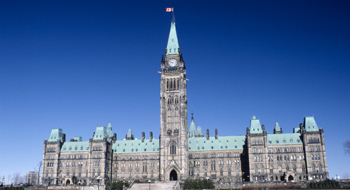
In its 2019 budget on Tuesday, the federal government announced a number of proposals regarding pension protections, off the back of recent high-profile corporate bankruptcies that have thrown the sustainability of some Canadians’ defined benefit plans into doubt during the past few years.
Indeed, the federal government received 4,400 submissions in response to its request for comment on the issue.
In order to protect corporate pensions in the event of an insolvency, the budget proposed the following measures:
- Requiring those involved in insolvency proceedings to act in good faith and giving courts greater ability to review payments made to executives in the lead up to insolvency;
- Requiring publicly traded, federally incorporated firms to disclose their policies pertaining to workers, pensioners and executive compensation, or explain why these policies aren’t in place;
- Clarifying in federal pension law that if a pension plan is terminated, it must provide the same pension benefits as when it was ongoing; and
- Requiring these firms to hold and disclose the results of non-binding shareholder votes on executive compensation.
Read: Sears Canada pensioners going after 2013 dividend paid to shareholders
“It will be interesting to see how it works in practice,” says Simon Nelson, principal for pensions and benefits at Eckler Ltd. “There’s not a lot in the budget in terms of how this stuff will work or what it really means. What does it mean to make things more transparent for plan members? And what does it really mean to disclose policies related to workers and pensioners? It’s fine to put that on a piece of paper, but I don’t know what practical implications it has.”
The federal government will be consulting on the proposals, which will lead to further details, he says.
“The one I found most interesting was the statement they’re going to clarify in federal law that a pension plan has to provide the same benefits when it’s terminated as when it was ongoing,” says Nelson. “I’ll confess, none of us really know what that means in practice. We had some ideas but it would be total conjecture at this point.”
Read: Annuity sales hit record highs in 2018, led by buyouts: report
The budget also proposed allocating $150,000 over three years to the National Pension Hub to support its research and $12.5 million to the hub’s founder the Global Risk Institute to continue its work.
As well, it proposed changes to tax laws that make advanced life deferred annuities possible. These would defer the annuity’s start until the recipient reaches age 85, whereas normally tax rules require annuities purchased with registered funds to start when the annuitant reaches age 71. Allowing for the deferral of annuities bought with funds from registered plans is an important way the government can help Canadians mitigate longevity risk, says Alexandre Laurin, director of research at the C.D. Howe Institute.
“There was a lot of support in the community for this,” says Laurin. His organization has been working on research that supports the idea since the beginning of 2018. “It could be great for people decumulating for their [defined contribution] plans or other capital accumulation plans.”
Read: Longer living Canadians need option of standalone longevity insurance: report
The budget also addressed the problem that some Canadian seniors don’t actually apply to begin receiving their Canada Pension Plan benefits. It proposed proactively enrolling CPP contributors who are 70 years old or older as of 2020 and who have yet to begin receiving benefits. Further, it proposed an extension of the opt-out period to a year from the current six months to mitigate potential problems caused by the proactive enrolment.
“It’s estimated that with this change, approximately 40,000 individuals over the age of 70 who are currently missing out would begin to receive an average monthly retirement pension of $302 in 2020,” stated the budget. “In addition, approximately 1,500 Canadian seniors turning age 70 in 2020 will be proactively enrolled, receiving an estimated average monthly retirement pension of $645. By 2040, as many as 4,000 people could be proactively enrolled each year.”
This year’s budget is full of small incremental benefits where retirement security is concerned, says Nelson. “[It was about] really ensuring people get what they’re entitled to and get what they maybe don’t realize they’re entitled to, so making sure whatever’s out there right now people are receiving.”
Read: Pension stakeholders call on feds to remove barriers to longevity risk pooling
